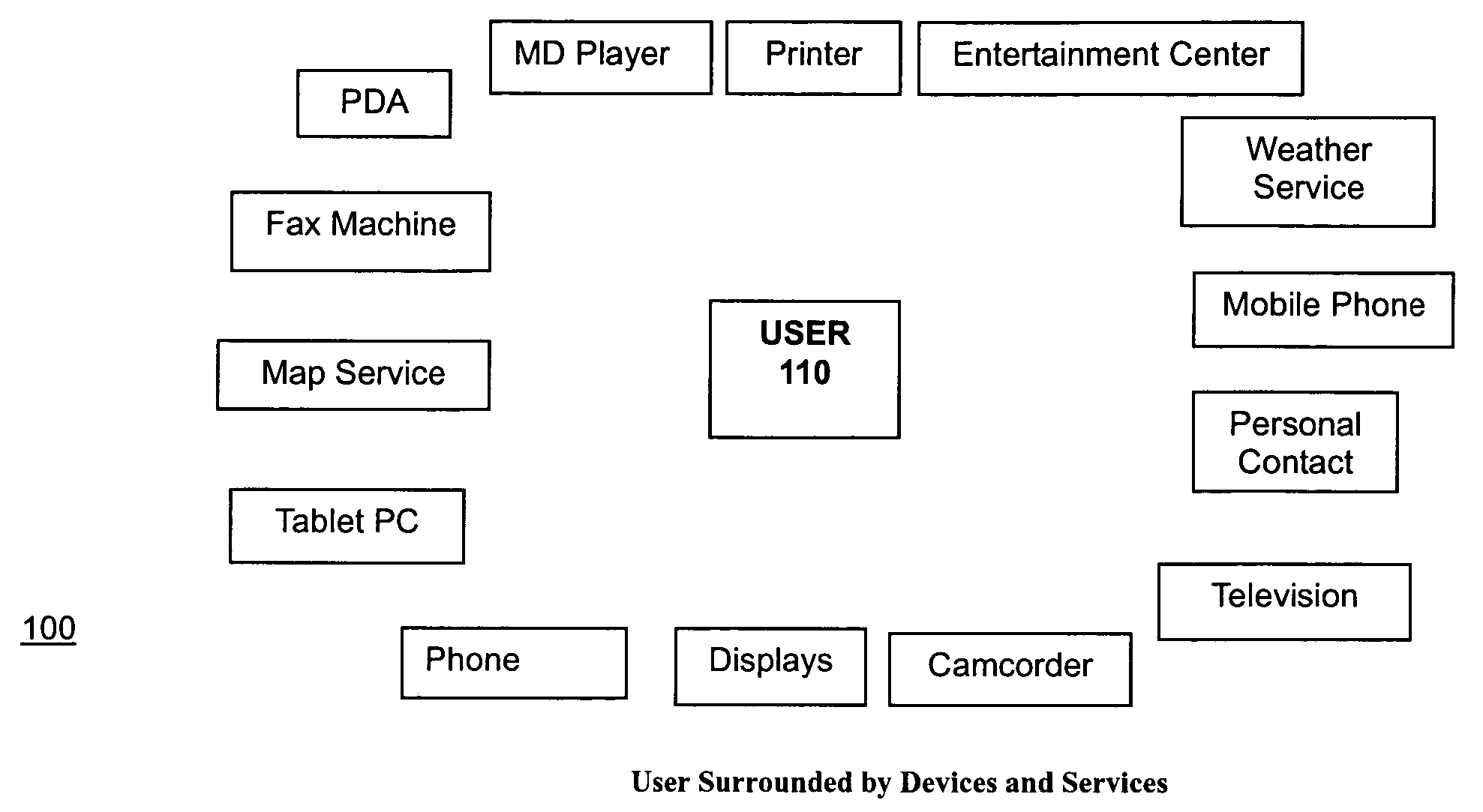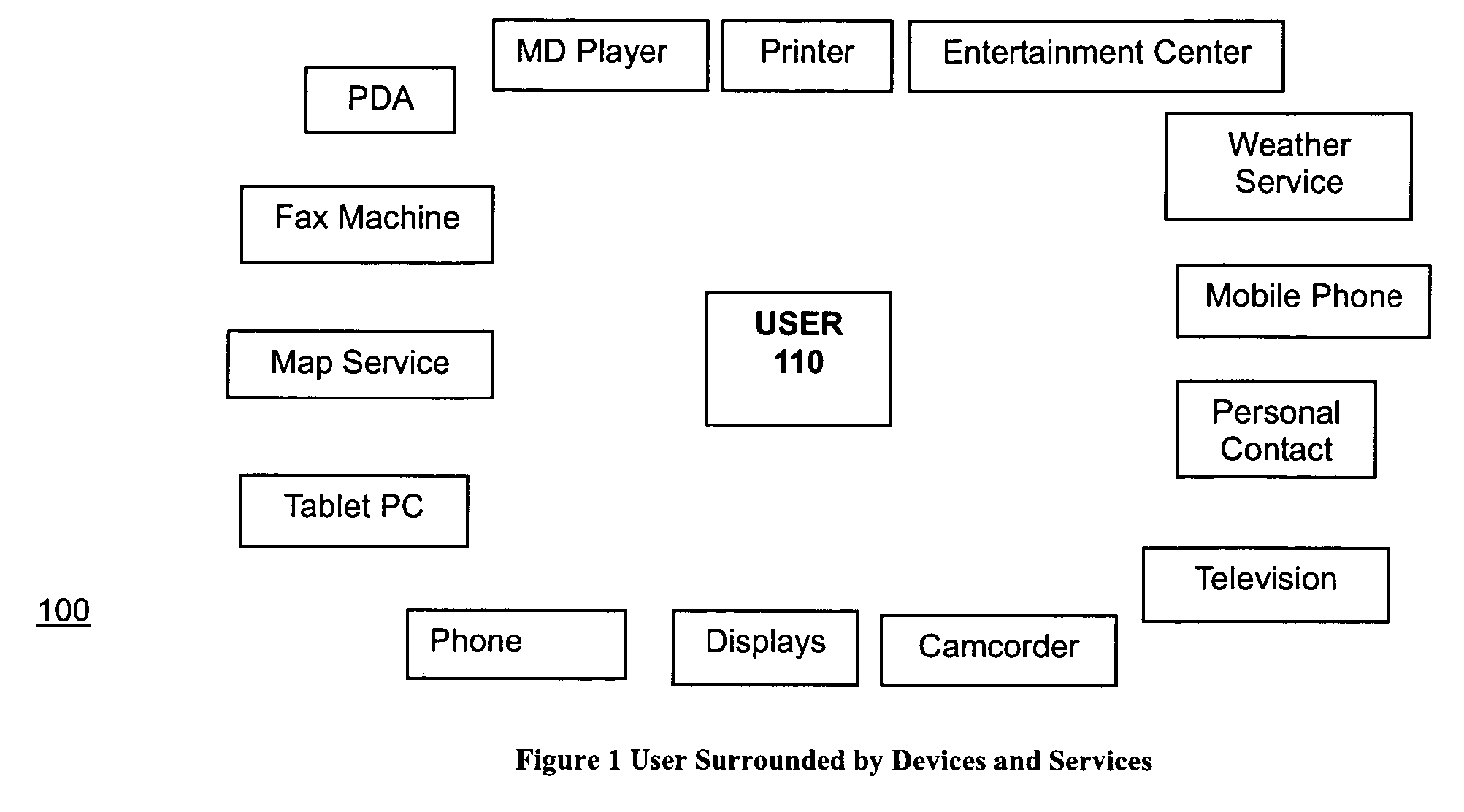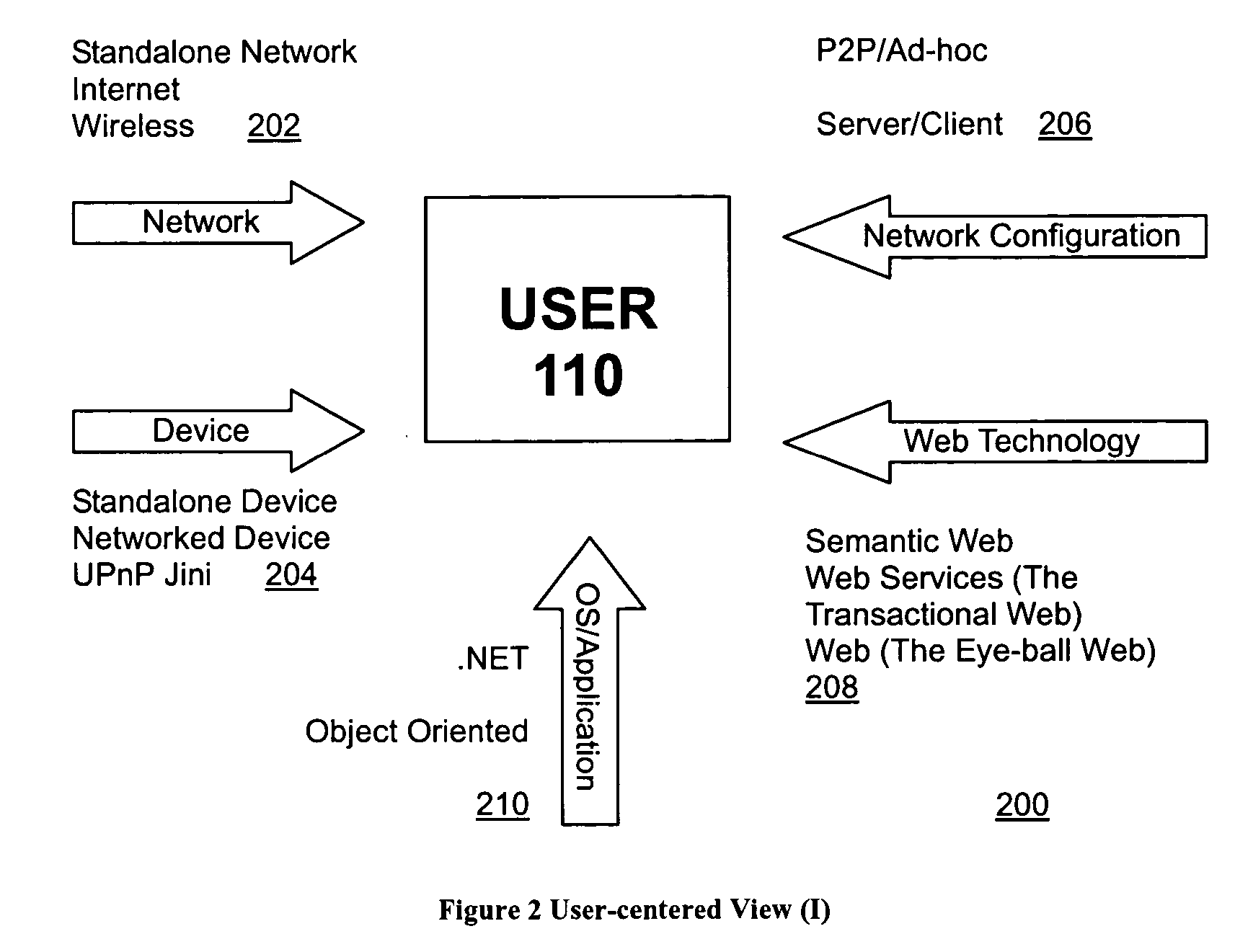Applications can change the items in the
list, but there is not an easy way for end-users to change it.
There is not an easy way for end-users to modify the
list.
As a result, this is not a flexible and scaleable approach because the range of possibilities has been decided during design time
The
system has limited ways to accommodate the user's actions and wishes, nor it can accurately "perceive" the nature (
semantics or meaning) of the input.
Complex user tasks, entail more complex workflows with complex sequences of events and actions, that would be impossible (technologically speaking) with the simplistic techniques used in these discussed examples.
In summary, during the current transitional state of personal computing, we observe attempts to speculate on the user's task by guessing the meaning of input based on its syntactic features, and invoking the right application with proper input; this approach is hardwired and brittle.
We argue that Personal Computing exhibits substantial limitations, due to the following reasons:
As personal computing reaches the masses it is unreasonable to expect a high degree of computing experience and proficiency by the average non-expert user.
Personal computing is also problematic for the advanced user as well, because it can be time-consuming
Computing environments are becoming increasingly more complex for the average user.
This is due to both the complexity and proliferation of applications and devices available to the users.
This goal is in conflict with the increasing complexity of computing environments.
Even when the end-user possesses substantial expertise, taking
advantage of what is possible in today's computing environment takes considerable time.
As computers get permanently connected to computer networks the distinctions between local and remote applications and data collapse, or even worse, they are confusing to
computer users.
For one thing, the average user may not even be aware of what is possible or feasible in such environments, as available resources (devices and applications) may be constantly changing, and moreover the user cannot rely on the convenience of a flexible and unified
user interface for managing the interaction with such an environment.
In other words, the personal computing approach is infeasible in a setting replete with devices and applications that are not a priori known to the user.
When faced with that plethora of devices, e-services and applications, the user can not perform tasks that utilize functionalities from all these sources, unless the devices, application and e-services have been designed for that task.
Moreover, the casual user is often not unaware of what such tasks are possible.
In that sense, tasks are (potentially complex) actions that users conceive, which might or might not be computationally feasible in their entirety.
In other words the availability of services alone does not enable Task Computing by itself.
Similarly, during execution, a failure (or some other exception) due to network problems, service failure, or some other difficulty in executing a sub-task of a specified task, might require that the user seeks an alternative / substitute service (through further Discovery and / or or Filtering) or even a modification of the task itself.
For instance, it can not be used if TCC is behind a firewall and the
callback interface is inaccessible from the registry.
These tasks present challenges due to the fact that a specified task has been specified using
semantic information about the services it invokes and the input and output parameters of such services but on the other hand that
semantic information is not what is used for the execution of the task.
A
second source of challenges arises from the fact that just because a
service composition is feasible (one of the goals that the TCE attempts to satisfy during the Task Specification stage) it does not mean that it will be executed correctly.
Potential problems include erroneous
semantic information about the constituent services, failures of the systems on which such services are actually running, network-related problems, etc.
One of the main technical challenges in Task Computing has to do with the fact that services are defined in
semantic layer, so are the input / output parameters of the services.
Since they are complicated to generate manually, a tool, namely OntoLink, is used.
When failure occurs at the
service layer, such failure might be due to either an incorrect invocation of, or binding to the service, or it might be due to additional, unforeseen requirements and / or credentials being necessary for accessing and / or using the service.
Or, when the discovered and filtered services are insufficient for the task that the user is attempting a "Search for more Services" option might become available.
 Login to View More
Login to View More  Login to View More
Login to View More 


